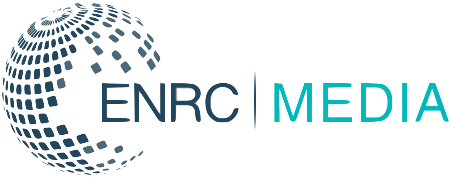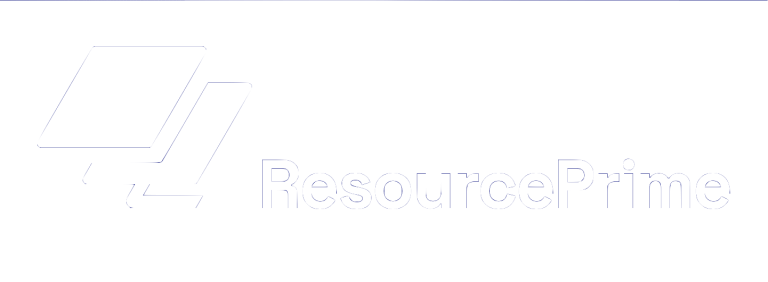Navigating Rising Power Demand and Shifting Regional Market Dynamics
In recent years, citizens of the Republic of Congo (RoC) have faced an unprecedented power crisis that has had a terrible impact on the entire economy, affecting businesses and residents ultimately creating significant uncertainty in terms of energy security. Even though the country is said to have made significant investments in power infrastructure through public and private sector partnerships, the quality of service for electricity has significantly deteriorated, raising legitimate questions about the effectiveness of these investments.
According to one senior government official, the ongoing crisis that was at its peak in 2023 can be attributed to, rapid urbanization of Brazzaville and Pointe-Noire, delays on the construction of other power plants, deterioration of grid, especially the interconnection with the Democratic Republic of Congo (DRC) grid, where even minor disturbances in one country can trigger widespread disruptions in both, and gas supply issues at the country’s main power plant, which accounts for 72% of electricity production. In addition, RoC has witnessed a significant reduction in the quantity of electricity imported from the Democratic Republic of the Congo (DRC) as the latter is no longer ins a position to supply the initial agreed quantities and there are some quality issues also when the power reaches the Mbouono substation in Congo-Brazzaville, is crushed by the load.
RoC has long relied on fossil fuels, particularly natural gas, as the backbone of its electricity generation sector. Hydropower on the other hand is said to account for over 25% of the energy generation capacity. These resources have played a critical role in powering industries, generating revenue, and maintaining energy security. Notwithstanding, the national electricity access rate stands at 50.6% with a stark urban–rural divide (12.4 % rural access). As the global energy landscape shifts toward adopting alternative sources of power generation to ensure a dual path to sustainability, RoC has a unique opportunity to harness its abundant resources by integrating alternative energy solutions, including small hydropower, solar, and even wind projects.
The Current Energy Landscape and the Role of Renewable Sources in the Republic of Congo
The RoC, with a population of 5.7 million, is a country rich in natural resources, including significant hydropower potential estimated at 2.5 GW, of which less than 5 percent is currently exploited. The national electricity access rate is estimated at 50.6., with a stark urban–rural divide (12.4 percent rural access). ROC has made progress in the energy sector, increasing its installed capacity from 325 MW in 2017 to 410 MW in 2019.
ROC’s key generation sites include the Imboulou dam (85 MW), Moukoukoulou dam (74 MW), Pointe-Noire thermal power station (over 400 MW), and Ndjeno power station (25 MW). The Centrale Electrique du Congo (CEC) Pointe-Noire Power Plant, Gas Turbine power plant is a 484 MW. It is located in Kouilou, Republic of Congo.
The ROC also imports approximately 40MW of electricity from . Installed capacity increased because of the construction of the Centrale Électrique du Djėno (CED) and Centrale Électrique du Congo (CEC) power plants in 2007 and 2010, respectively, and the capacity expansions that followed in subsequent years. Eni, the leading natural gas producer in Congo Brazzaville, constructed the two natural gas-fired power plants to reduce natural gas flaring and commercialize more of the associated natural gas produced at its oil fields.
However, the last major infrastructure investment occurred before 2014. Thus, Notwithstanding, the national electricity access rate stands at 50.6. with a stark urban–rural divide (12.4 percent rural access).
The Adoption of Renewable as in Alternative Energy Source
Like other parts of Africa where energy access is relatively low, RoC is leaning towards a dual-energy strategy to provide more solutions rather than constraints. By gradually incorporating renewables alongside traditional energy sources, the country can enhance its energy resilience, meet climate commitments, and create a diversified energy mix that is both secure and future-proof and above all, provide power to rural communities at minimal costs.
Rather than viewing fossil fuels and renewables as opposing forces, RoC is integrating them to create a more resilient and sustainable energy system while opening the market for private sector to develop small hydropower, solar, and wind projects and provide a pathway to cleaner energy without compromising reliability. A strategic approach that utilizes fossil fuels as a stabilizing force while ramping up renewables can ensure energy security, economic stability, and long-term sustainability, especially in rural communities.
So far, ROC has made some progress in adoption with notable projects including
- Congolese firm Tinda Energy secured a financial agreement with Chinese engineering company Complant in November 2024 to develop the Ingié 2021-2046 project – a 65 MW renewable energy initiative. Situated in the Ignié Special Economic Zone (SEZ), the project will generate 55 MW from a hybrid solar plant and an additional 10 MW from a biomass facility. Set for completion within 18 months, the project will cover a 100-hectare site allocated for renewable energy development within the SEZ.
- Meanwhile, in 2023, the country inaugurated its first renewable energy research center in Oyo, focusing on applied research to develop the potential of hydropower, biomass, wind and solar energy. A result of the cooperation between the Congolese government, Italian energy major Eni and the UN Industrial Development Organization, the Oyo center exemplifies the country’s commitment to diversifying its energy mix and creating an integrated energy value chain that leverages both renewable and oil and gas resources.
- To further support renewable energy adoption, Italy’s Mattei Plan for Africa – a plan that aims to strengthen renewable energy investment and development in Africa – emphasizes diversifying the country’s economy towards renewable energy, sustainable agriculture and climate adaptation while reducing the country’s reliance on fossil fuels. By channeling financing through Italian export credit agency Società per Azioni per il Credito all’Esportazione and the Italian Climate Fund towards green projects, Italy seeks to foster non-oil sectors and assist the Congo in implementing tax reforms and climate resilience.
- Unlocking Congo’s Solar Potential. Earlier this year, Eni announced the actions and objectives of an integrated energy project in the Republic of Congo. The project aims to bring electricity to 33 community facilities – 11 health centers and 22 drinking water wells – powered by solar panels. Meanwhile, UAE renewable energy company AMEA Power recently signed a MoU with the Congolese government to develop a 100 MW solar photovoltaic project. Representing the first large-scale solar project in the country and paving the way for future developments, the plant will advance clean energy access in the Congo, where approximately 50% of the population lack access to electricity.
- Potam@i Hydrolienne Project:The EU is funding the extension of the Potam@i Hydrolienne project, which involves the design and manufacturing of a second floating tidal turbine. Initiated by Pot@maï with support from the ENGIE Foundation, the turbine is installed at Louboussa (Democratic Republic of Congo) on the riverbanks. The turbine, designed by Hydro-Gen, produces 10kW of electricity continuously throughout the year. The Essential Service Unit (ESU) uses this energy to provide useful and accessible products and services to the inhabitants of three villages, serving around 3,000 people. The panels will ensure power supply for lighting, water production, and maintain the cold chain during any interruptions in the turbine’s operation. The positioning of the tidal turbine has been precisely defined.
- Sun Energy
Key Recommendations for adopting the multiple energy system
The transition to alternative energy in the Republic of Congo (DRC) is impeded by a complex policy environment characterized by the interplay of international green policies and local governance challenges. Developing economies, such as the DRC, must secure market access and attract investment while retaining policy flexibility.
Enhanced legal and institutional frameworks supporting renewable energy projects including clear and efficient procedures for licensing and regulatory compliance established. The Ministry of Energy and Hydraulic Resources (MEHR), has to work in collaboration with the Electricity Sector Regulator and Rural Electrification Agency and other stakeholders to implement instruments that will modernize regulations and improve sector performance. This will have to including taxation and customs frameworks, and third-party access to the grid. Legal aspects, such as drafting legal instruments. Establishing clear procedures for licensing applications for mini-grid projects and selling solar home system (SHS) equipment in wholesale and retail quantities. Tariff setting methodologies for mini-grids and establishing standard financial models. Improved financial models and tariff methodologies that attract private investments. Recent developments in ROC’s energy sector include the first tariff increase since 1994, implemented in February 2023 as part of an agreement with the International Monetary Fund (IMF). The EU is supporting the development of renewable energy regulation in the country, focusing on hydro concessions frameworks and solar systems, biomass, and other renewable energy sources. A key issue to address is third-party access to the grid The European Union supporting mini-hydro projects is supporting the regulator to prepare all of the documents for this concession for the Makoukou water dams.
In addition, since 2022, the EU has been supporting renewable energy and rural electrification. The EU has launched a technical assistance mission that will start next year, working with all stakeholders to roll it out. This also includes biomass. The EU is launching this technical assistance with the hope of improving the framework for renewable energy.
They need to support all aspects around regulation and laws to create an attractive regulatory framework. This is the main support from the EU.
The EU is also going to address issues of biomass energy and sustainability, supporting different initiatives around clean cooking. They will support rural and remote areas by sending TORs for small projects in these regions. Additionally, they are working with the Ministry in charge of forestry.
Other initiatives that will have a huge impact includes: World Bank ; On June 26, 2024, the World Bank approved a $100 million program for Strengthening Electricity Services (PASEL) program. This initiative seeks to improve the quality-of-service delivery and provide greater access to electricity to boost the economy and improve the quality of life for the people of the Republic of Congo.
- Good governance is crucial for transforming the ROCs mineral resources into sustainable development. This situation reinforces inequalities, as larger corporations tend to dominate international supply chains.
Moreover, the enforcement of regulatory frameworks is hindered by a lack of capacity and resources within the DRC’s governmental institutions. To ensure an effective mechanism, the following deliverables will be produced to ensure a structured and effective approach to enhancing the regulatory framework for renewable energy projects in the Republic of Congo. The EU is collaborating with UNIDO, managing two regional research centers in renewable energy and energy efficiency. UNIDO is seriously involved with ENI to support these centers and energy efficiency. The EU is supporting UNIDO in these two centers, which were launched last year and are now in full operation. The OYO center is more technically oriented, while the Luanda center focuses more on policy, rules, and regulations. There is a donor forum underway in the ROC. The WB wants to take the lead. EECA should consider collaboration with them to further.
Conclusion
- Reiterate the Republic of Congo’s potential to become a leader in alternative energy if the right measures are taken.
- Emphasize the need for collective action from policymakers, private sector stakeholders, and development partners.
- End with a call to action: encouraging investment, policy acceleration, and regional collaboration for a sustainable energy future.
Lorem ipsum dolor sit amet, consectetur adipiscing elit. Ut elit tellus, luctus nec ullamcorper mattis, pulvinar dapibus leo.
- Policy and Governance for Off-Grid Rural Electrification: Unlocking the Potential of Mini-Grids
- ESG: More Than Compliance—A Strategic Advantage
- Driving Investment: New Regulatory Opportunities in DRC’s Transmission Sector
- Key Changes in DRC Electricity Sector Regulations and What TheyMean for Future Energy Projects.

